
TARGET 081210
A Diamond Below
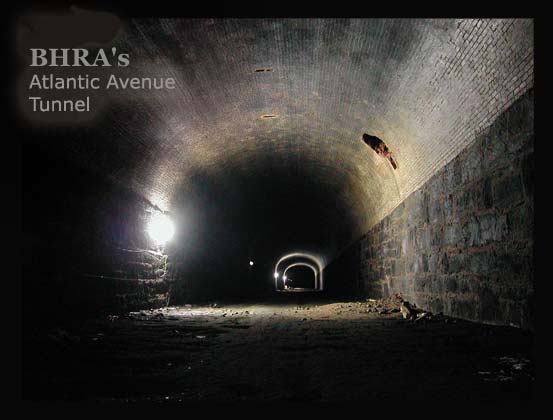
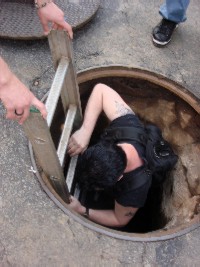 Not long ago, a young engineering student got the chance to go down a manhole in the middle of Atlantic Avenue to find a mystery he had been seeking. What he found was truly unbelievable.
Not long ago, a young engineering student got the chance to go down a manhole in the middle of Atlantic Avenue to find a mystery he had been seeking. What he found was truly unbelievable.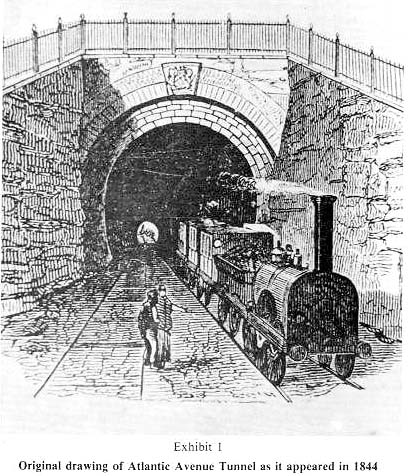
Using the cut and cover method, the street was dug up for roughly 12 blocks, a wooden frame was built, a barrel vaulted brick roof put in, and the street relayed, all in the astonishingly short time of seven months. The work was done almost entirely by Irish immigrants. When the Irish workers were told by a British contractor they would have to miss church and work on Sundays, according to an 1844 Brooklyn Eagle article, an Irishman pulled a gun, shot the Brit, and the group buried him behind the wall of the tunnel-where presumably his body still resides today.
By the end of the 1850’s the tunnel had lost much of its use. Vanderbilt had left the LIRR to pursue riches by running steamships to California, and the tunnel fell into disuse. Political maneuvering led to trains in Brooklyn being declared a nuisance. The tunnel was to be shut down, filled in and closed up. The 130,000 dollar contract to do so was awarded to a shady operator named Electus Litchfield. Litchfield, however, had other plans. Rather then filling in the tunnel, he filled in the ends of tunnel, capped up the holes to the street, and had some cronies sign a document that the tunnel had been filled in completely. Litchfield made off with a good deal of money and everyone except Litchfield and his buddies thought the tunnel was gone forever.
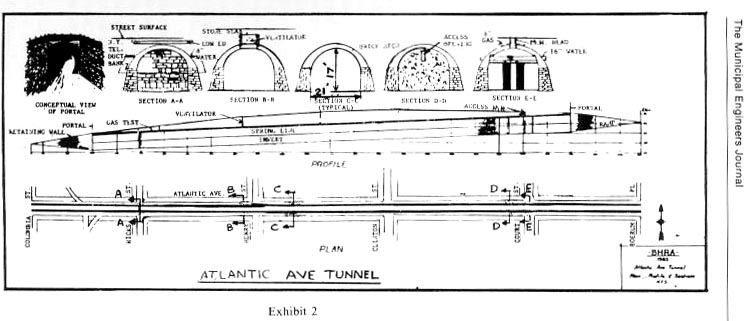
Diamond called into the show but the announcer had no more information. Diamond managed to get in touch with O’Toole but the dismissive author knew nothing else, he had just heard a rumor of the tunnel. He told Diamond to “go find the tunnel yourself.” The 19 year old Diamond decided to do just that, transforming himself into a kind of Brooklyn Indiana Jones. “I scoured through all the newspapers printed in Brooklyn during the 19th and early 20 centuries. I found an article in the Brooklyn Eagle, 7/23/11, a full page about the tunnel which told about a set of plans in the borough president’s office” Diamond recalls. When he got to the office they told him that there were no such plans. Diamond asked if he could look through a locked box of old unmarked papers. After jimmying the lock, and sifting through ancient deeds and Dutch histories, there, rolled up in the box were the plans for a 1,611 foot long tunnel running under Atlantic Ave in Brooklyn. On the plans was a little blue circle, representing a manhole, and quite possibly, an entrance.
In the early morning of 1981, Diamond stood on the corner of Atlantic Ave and Court St, looking down at a small smooth manhole. The manhole looked unlike any others layed down by the city. It had been almost a year since had started his search. With the help of some friends at the department of transportation, Diamond opened the manhole, dreams of the tunnel dancing in his head, but a foot beneath the opening was a solid floor of dirt. It looked like he was wrong. The tunnel had been filled after all. As the DOT guys prepared to leave Diamond decided to make sure. Crawling on his stomach he inched along the crawlspace under the street until he came to a place where the dirt met the ceiling. In a last ditch effort he began digging through the dirt with his hands. A few inches beneath the dirt his fingernails scraped on a poorly constructed brick wall. It looked like it had been built in a hurry. Using a large metal pole Diamond smashed through the brick wall, sending a cascade of bricks into an empty space. Diamond put his head through the hole. On the other side was a 15 foot drop into a dark space large enough to hold a freight train. Diamond had found his tunnel.
Every ten years or so an article would be written in a local paper about the tunnel, musing that it might still exist. River pirates, bootleggers, mountains of treasure, Jon Wilkes Booth’s lost diary, and even “Persian Vampires” (in H.P. Lovecraft’s “Horror At Red Hook”) were said to live within the mythical tunnel. While Diamond found no pirates or vampires in the tunnel (yet), the mystery is not over. The tunnel is blocked in the middle by a large wall, leaving roughly six blocks of the tunnel, as of yet, unexplored. Diamond believes there is a good chance that a locomotive originally built by British locomotive pioneer Robert Stephenson may lay in that section of tunnel. Booth’s diary may be there after all. Diamond hopes to gain access to the final section of the tunnel sometime in 2009, and “What’s behind the Wall” a documentary about Diamond’s quest, is currently in production.
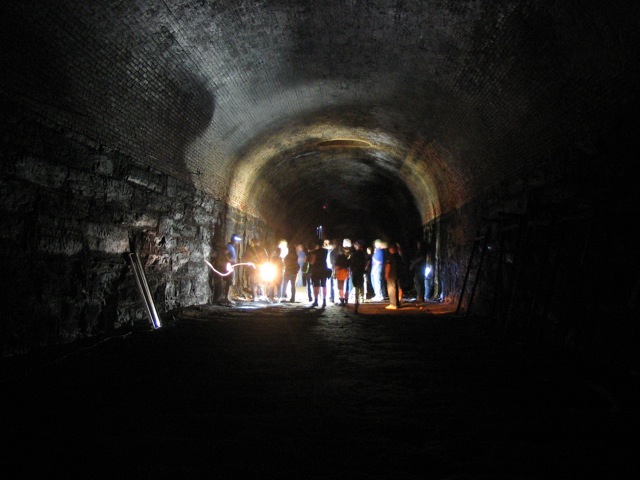
For more information on the tunnel try the short wiki, Obsidian Kitten’s (source for the pic above) nice piece about visiting the tunnel, the Forgotten NY page, and best of all Bob Diamond’s own page www.brooklynrail.net. The tunnel was also recently featured on the History Channels “Cities of the Underground” and the tunnel can be seen in youtube videos here, here, here and here.
Tunnel FeedBack MAP
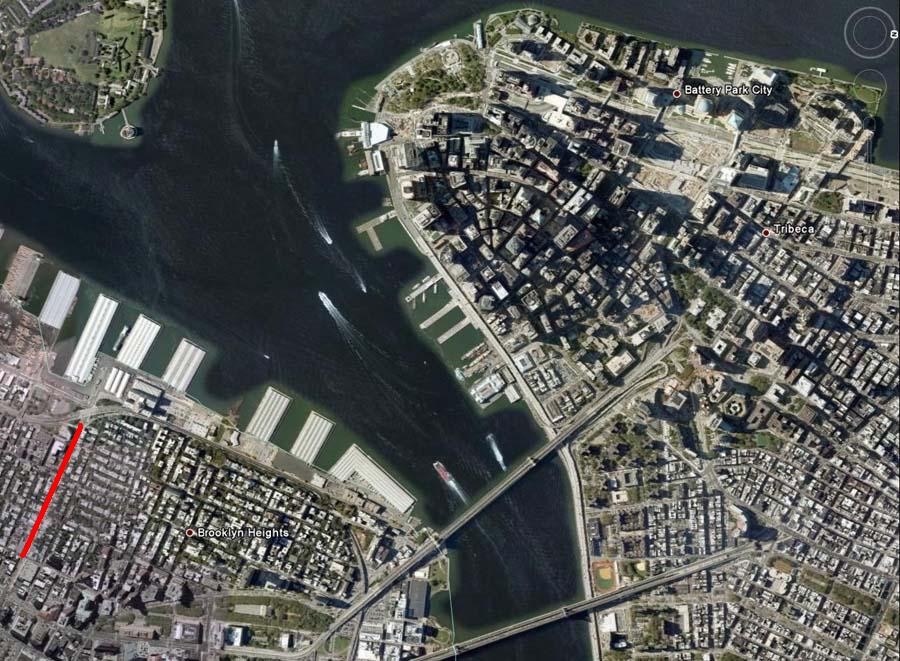
If you gained information in your session which was not covered in the feedback, please take a look at these sites:
You can find out about the date of the next tour at
"What's behind the wall"
Bob Diamond’s own page
The tunnel was also recently featured on the History Channels “Cities of the Underground” and the tunnel can be seen in YouTube videos.
Many thanks to Ray McClure for suggesting and programming this target.